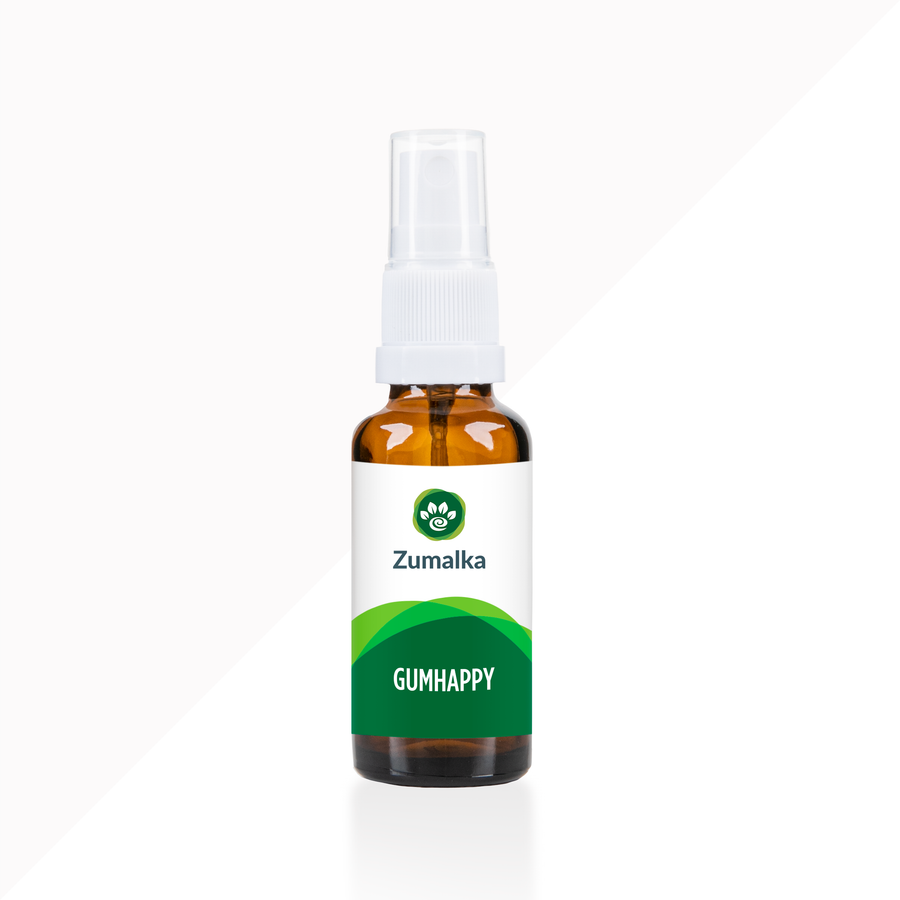Cat Stomatitis: 5 Expert-Approved and Effective Home Remedies for Relief
Has your cat been drooling or turning away from their food more than usual? They may be suffering from feline stomatitis, an inflammatory mouth condition, including the gums.
In this article, we’ll discuss the causes, symptoms, treatment options, and easy home remedies to help your cat feel more comfortable.
What is Stomatitis in Cats?

Feline stomatitis is a severe and painful inflammatory condition that affects the mouth. Also known as feline chronic gingivostomatitis (FCGS), this condition is relatively common in cats.
It targets the mucous membranes and can extend deep into the surrounding tissues. Unlike gingivitis, which affects only the gums, stomatitis is a more extensive and serious health issue.
Stomatitis in cats can affect the soft tissues of the mouth, including the gums, tongue, and cheeks. In severe cases, the inflammation may spread to the roof and floor of the mouth and extend to the back of the throat (fauces or caudal area).
Is Feline Stomatitis a Serious or Life-Threatening Condition?
The short answer is no—stomatitis in cats is not inherently life-threatening or serious on its own.
While cat stomatitis is not life-threatening, it can cause severe inflammation and pain, leading to serious complications. In addition to the risk of anorexia (severe loss of appetite), affected cats may also develop fatty liver disease (hepatic lipidosis).
Moreover, hepatic lipidosis is a serious condition that can develop if a cat hasn’t eaten within 48 hours. This liver disorder can be life-threatening and requires immediate veterinary attention.
Additionally, if viral causes of stomatitis in cats—such as feline calicivirus (FCV)—are not addressed promptly, they can lead to serious complications and long-term health issues if left untreated.
Relieve Your Cat’s Stomatitis: 5 Home Remedies to Try

Fortunately, there are home remedies that can help provide relief for your cat. However, it's important to remember that while these solutions may ease discomfort, veterinary care is essential if symptoms persist or worsen.
#1. Virgin coconut oil (VCO) helps reduce inflammation while also fighting bacteria.
A clinical study conducted in Central Java found that virgin coconut oil (VCO) helped alleviate the effects of stomatitis without causing any side effects. Although recovery took longer compared to conventional treatments, VCO still proved beneficial in managing the condition.
To help soothe your cat’s stomatitis, gently apply about ¼ teaspoon of virgin coconut oil to the affected areas once a day. Always ensure you’re using food-grade VCO for safe and effective application.
#2. Consider incorporating high-quality natural products into your cat’s home care routine.
Zumalka’s GUMHAPPY OPTIMAL is specially formulated to support healthy gums and teeth. In addition to relieving red, swollen gums that cause pain and discomfort, this kit helps combat viruses and bacteria while strengthening the immune system.
GUMHAPPY OPTIMAL helps combat viruses with the included SILVERPET, while the TARTAR CONTROL remedy works to reduce inflammation and support long-term prevention with continued use.
#3. Probiotics can improve your cat’s gut health by balancing the microbiome.
While probiotics mainly support gut health, a balanced microbiome also strengthens a cat’s immune system. A healthy gut can help reduce oral inflammation and promote overall well-being.
Whether you choose plain, unsweetened yogurt—or a lactose-free option for sensitive cats—or a cat-specific probiotic supplement, limit the serving to one teaspoon per day. While probiotics support digestive health, too much can lead to stomach upset.
#4. Aloe vera gel helps soothe pain while reducing inflammation.
Studies indicate that aloe vera gel can help soothe pain and reduce inflammation in the gums and other areas affected by stomatitis. Choose a pet-safe, all-natural aloe vera gel and apply it to your cat’s gums using a cotton swab. To keep your cat comfortable, apply it gently and at a slow pace.
#5. Chamomile tea helps eliminate harmful bacteria while promoting faster healing.
Did you know chamomile contains compounds that help inhibit harmful bacteria while reducing pain and swelling from stomatitis? In addition to their antibacterial and anti-inflammatory properties, these teas may also promote faster healing.
Brew a weak chamomile and let it cool completely before use. Soak a cotton ball in the tea and gently dab it onto your cat’s gums. This can help reduce inflammation, fight bacteria, and support healing.
To reiterate, chamomile tea should not be given to cats to drink, as it may cause side effects in large amounts. However, gently dabbing chamomile tea on their gums is generally considered safe.
How to Recognize the Signs of Feline Stomatitis
The most common signs of cat stomatitis include:
- Sudden changes in behavior or daily routine
- Increased vocalization and restlessness
- Frequent pawing at the face or mouth
- Reduced appetite or refusal to eat
- Red, inflamed gums, mouth, and inner cheeks
- Unexplained weight loss
- Bad breath (halitosis) and excessive drooling (ptyalism)
- Poor grooming habits that will lead in time to an unkempt coat
- Mouth ulcers or bleeding
- Swollen lymph nodes in the oral area
Since cats instinctively hide signs of pain and discomfort, regular bonding or grooming sessions provide a great opportunity to check for these symptoms. Paying close attention during cuddle time can help you spot any early signs of stomatitis and other health concerns.
Why Do Cats Develop Stomatitis? Common Causes Explained
Despite significant advancements in veterinary medicine, the exact cause of feline stomatitis remains uncertain. However, several factors may increase a cat’s risk of developing this condition:
- Abnormal immune response to plaque bacteria
- Persistent buildup of dental plaque and calculus
- Viral infections, including feline calicivirus (FCV), feline herpesvirus (FHV-1), feline leukemia virus (FeLV), and feline immunodeficiency virus (FIV)
- Underlying oral health conditions such as tooth resorption and periodontitis
- Genetic predisposition, particularly in breeds like Himalayans and Persians
How is Stomatitis Diagnosed in Cats?

To diagnose feline stomatitis, a veterinarian will typically begin with a thorough oral examination. Because the process can be painful and uncomfortable for the cat, sedation is often required.
The veterinarian will also review the cat’s comprehensive medical history and assess for underlying conditions, such as kidney disease. Standard diagnostic tests, including urinalysis and a complete blood count (CBC), will be conducted to identify any systemic health issues.
Tests for viral infections such as FeLV and FIV may also be conducted, as these can weaken the immune system. In some cases, dental X-rays are recommended to examine the tooth roots and surrounding bone for signs of periodontal disease or tooth resorption.
In advanced cases, a biopsy of the affected oral tissues may be conducted to determine whether oral cancer is present in cats.
Conventional Treatments for Cat Stomatitis
The primary goals of conventional treatment for feline stomatitis are to manage pain, reduce inflammation, and enhance the cat’s overall quality of life. Treatment typically includes the following:
- Immunomodulatory drugs (e.g., interferons, bovine lactoferrin, esterified fatty acids) to help regulate immune system response
- Antibiotics to manage secondary bacterial infections and prevent flare-ups
- Non-steroidal anti-inflammatory drugs (NSAIDs) to alleviate pain and reduce inflammation
- Soft, palatable diets to make eating more comfortable for affected cats
- Pain management medications to improve overall well-being
- Tooth extractions,
- often involving premolars and molars, to minimize inflammation and discomfort
- Professional dental cleanings to remove plaque and tartar buildup
- Antiseptic mouth rinses (e.g., chlorhexidine) to support oral hygiene and reduce bacterial growth
- Laser therapy as an alternative treatment for pain and inflammation relief
- Steroids for severe cases to provide short-term inflammation and pain control
Every cat with stomatitis may require a unique treatment plan, so it's essential to work closely with your veterinarian to determine the best approach. Early detection is also crucial for managing the condition more effectively.
Recovery and Long-Term Care for Cats with Stomatitis
Dental procedures are commonly performed on cats with stomatitis, often accompanied by temporary dietary adjustments, such as a soft diet. Following successful treatment, particularly after these more invasive procedures, you can expect significant improvements in your cat’s comfort, appetite, and overall quality of life.
In some cases, cats may require ongoing veterinary care even after tooth extractions. Since feline stomatitis remains somewhat of a medical mystery, regular consultations with your veterinarian—or a pet homeopathy expert if you prefer a more natural approach—are essential for effective long-term management.
Is It Possible to Prevent Feline Stomatitis?
As with other feline health conditions, prevention is key when it comes to stomatitis. However, since its exact cause remains unknown, complete prevention may not always be possible.
That said, there’s still plenty you can do. Taking a proactive approach to your cat’s oral health is the best strategy. Not only can this help reduce the risk of stomatitis, but it can also prevent other issues such as gingivitis and periodontitis.
In addition to regular tooth brushing with cat-specific toothpaste, routine professional dental cleanings by a veterinarian are essential. Using Zumalka’s TARTAR CONTROL is also helpful for supporting your cat’s dental hygiene and reducing plaque buildup.
Monitoring your cat’s diet—limiting sugary treats and prioritizing nutritious food—also plays a crucial role in maintaining oral health.
FAQs
How do you treat stomatitis in cats?
Feline stomatitis treatment focuses on pain management, reducing inflammation, and improving oral health. Options include tooth extractions, antibiotics, anti-inflammatory medications, immunomodulators, antiseptic rinses, dietary changes, and regular veterinary care for long-term management.
How long can cats live with stomatitis?
With proper treatment, cats with stomatitis can live long, healthy lives. Early intervention, pain management, dental care, and regular veterinary checkups are key to improving their quality of life and longevity.
Do all cats with stomatitis have FIV?
No, not all cats with stomatitis have FIV. While FIV can weaken the immune system and increase susceptibility, stomatitis can occur in cats without FIV due to other factors like dental disease, infections, or immune system dysfunction.
What can be mistaken for stomatitis in cats?
Conditions that can be mistaken for stomatitis in cats include gingivitis, periodontal disease, dental abscesses, oral tumors, viral infections (like calicivirus), and eosinophilic granuloma complex, all of which cause inflammation, pain, and difficulty eating.
Can stomatitis be cured?
There is no guaranteed cure for feline stomatitis, but treatments like tooth extractions, anti-inflammatory medications, and immunotherapy can manage symptoms effectively. Early intervention and ongoing veterinary support with homeopathy care significantly improve a cat’s quality of life.
Can cats spread stomatitis to humans?
No, feline stomatitis is not contagious to humans. It is an immune-mediated condition, not a zoonotic disease. However, maintaining good hygiene when handling an affected cat helps prevent the spread of bacteria and infections.
What is the new treatment for stomatitis in cats?
A newer treatment for feline stomatitis involves stem cell therapy, which helps modulate the immune response and reduce inflammation. Other advanced options include laser therapy and immunomodulatory drugs, offering promising alternatives for managing this painful condition.
What is the cause of stomatitis?
Stomatitis in cats is caused by an abnormal immune response to plaque, dental disease, or viral infections like FIV and FeLV. Genetic factors may also contribute, making some cats more susceptible to the condition.
How to tell if a cat's mouth hurts?
Signs of mouth pain in cats include drooling, bad breath, difficulty eating, pawing at the mouth, weight loss, red or swollen gums, vocalizing, and decreased grooming. A veterinary exam is essential for an accurate diagnosis and treatment. Consulting a pet homeopathy expert can also be helpful.
How do animals get stomatitis?
Animals develop stomatitis due to an abnormal immune response to plaque, infections, dental disease, or underlying health issues. Contributing factors include viruses, bacteria, poor oral hygiene, and genetic predisposition in certain species.
What can I give my cat for pain?
Only provide pain relief specifically formulated for pets, such as NSAIDs, opioids, corticosteroids, or natural options like homeopathic remedies. Never give human medications like ibuprofen or acetaminophen, as they are toxic to cats. Always consult your veterinarian or a qualified pet homeopathy specialist to ensure safe and effective treatment.
How painful is stomatitis in cats?
Feline stomatitis is extremely painful, causing difficulty eating, drooling, pawing at the mouth, and irritability. The chronic inflammation and ulcers make everyday activities uncomfortable, requiring veterinary treatment for pain management and improved quality of life.
How long can a cat go without eating?
Cats can survive about three days without eating, but not eating for 24 hours can indicate a serious issue. Prolonged starvation can lead to fatty liver. To emphasize, liver failure doesn’t occur simply because a cat hasn’t eaten for 24–48 hours.
However, untreated hepatic lipidosis—a condition that can develop during prolonged fasting—may progress to liver failure if not addressed promptly. Immediate veterinary attention is crucial for a cat refusing food.
What does an unhealthy cat mouth look like?
An unhealthy cat mouth may show red, inflamed gums, ulcers, bad breath, excessive drooling, bleeding, plaque buildup, or loose teeth. Signs like difficulty eating and pawing at the mouth indicate potential oral health problems.
What is the fastest way to cure stomatitis in cats?
The fastest way to manage feline stomatitis is full-mouth tooth extraction, which significantly reduces inflammation and pain. Additional treatments like pain relief, antibiotics, and immunotherapy can help improve recovery and long-term oral health. Always consult a veterinarian or a pet homeopathy expert for guidance.
What happens if stomatitis goes untreated?
If left untreated, feline stomatitis causes severe pain, difficulty eating, weight loss, excessive drooling, and infections. Over time, it can lead to malnutrition, a weakened immune system, and a significantly reduced quality of life.
A Final Word
Feline stomatitis is a painful condition that can greatly affect your cat’s health and well-being. Prioritizing oral care and seeking veterinary or homeopathic guidance at the first signs can help ensure timely and effective management.
Other oral and dental health issues can mimic stomatitis, making an accurate diagnosis essential. Consulting a veterinarian or pet homeopathy specialist at the first signs ensures proper treatment and care for your cat’s well-being.








Hi Patricia,
Thank you for your comment. I can sympathize with how stressful it is to see our beloved cat unwell. But rest assured you are not alone and we are more than happy to help!
We have sent you a private email to help your cat in a more personalized way.
We look forward to helping your cat feel much better soon!
Zumalka
Hi thank you for taking my message my cat a very bad case of stomatitis I’m so worried about her what can I give her natural as welll as medically I am treaty her medically can you help please
Hi Tamera,
Thank you for your comment. We have sent you an email questionnaire to help us better target your pet’s need ! We hope to hear from you soon.
I brushed my cats teeth tonight. She has really bad breath and red gums. This little girl is only 2 yrs old. Daisy, my cat, was brought to BC from California and put in shelter first. Then off to Bosleys were I saved her. She also suffers from ear infections which I have had to put her on special vet kibbles as the vet thinks its from allergies.
Hi Virginia,
Baking soda can be safe for pets as well but we would recommend seeing your vet or natural specialist before starting this at home option.
If you would like free online guidance from one of our specialists, please feel free to contact us any time!!
Regards,
Zumalka
Leave a comment